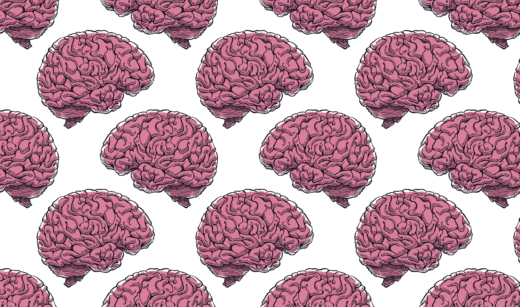Oakley recognizes that “many educators are not at all comfortable with or trained in neuroscience,” so she breaks down a few key principles that teachers can use in the classroom and share with students to help them demystify the learning process.
1. The Hiker Brain vs. The Race Car Brain
Start by teaching students the difference between focused and diffused thinking, says Oakley. When the brain is in focused mode, you can get started on the task at hand. But deep understanding is not fully accomplished in this mode.
Diffused thinking occurs when you allow your mind to wander, to imagine and to daydream. In this mode, the brain is still working -- consolidating information and “making sense of what you are trying to learn,” says Oakley. If a concept is easy for you to grasp right off, the focused mode might be sufficient, but if a new skill or concept “takes consideration, you have to toggle back and forth between these two modes of thinking as you get to true understanding of the material -- and this doesn’t happen quickly.”
Because toggling is essential to learning, teachers and students need to build downtime into their day -- time when learning can “happen on background” as you play a game, go on a walk or color a picture. It’s also one reason why sleep is so vital to healthy cognitive development.
Since students tend to equate speed with smarts, Oakley suggests sharing this metaphor: “There’s a race car brain and a hiker brain. They both get to the finish line, but not at the same time. The race car brain gets there really fast, but everything goes by in a blur. The hiker brain takes time. It hears birds singing, sees the rabbit trails, feels the leaves. It’s a very different experience and, in some ways, much richer and deeper. You don’t need to be a super swift learner. In fact, sometimes you can learn more deeply by going slowly.”
2. Chains and Chunks
In cognitive psychology, “chunking” refers to the well-practiced mental patterns that are essential to developing expertise in a topic. Oakley prefers the image of a “chain” when she explains this to students.
Learning is all about developing strong chains. For example, says Oakley, when you are first learning how to back up a car, you have to consciously think about each step, from how to turn the steering wheel to how to use your mirrors. But “once that process is chained, it’s easy” -- it becomes automatic. Similarly, once solving certain equations becomes automatic in math, students can apply these equations to more complex problems.
Teachers can help students identify the procedures in a unit of study that they need to master in order to take their learning to the next level -- from the steps of the scientific method to fundamental drawing techniques.
“Any type of mastery involves the development of chains of procedural fluency. Then you can get into more complex areas of fluency,” says Oakley. Here’s another way to think about it. We all have about four slots of working memory that we can use to problem-solve in the moment. One of those slots can be filled with an entire procedural chain -- and then you can put new information in the other slots.
3. The Power of Metaphor
“Metaphor and analogy are extraordinarily powerful teaching tools and very often underused,” says Oakley. “When you are trying to learn something new, the best way to learn it is to connect it with something you already know.”
The formal term for this is “neural reuse” -- the idea that metaphors use the same neural pathways as the concept a metaphor is describing. So familiar metaphors allow a learner to draw on a concept they have already mastered and apply it to a new situation. Or as Oakley says, metaphors “rapidly on-board” new ideas. For example, says Oakley, comparing the flow of electrons to the flow of water is a way to “jump-start students’ thinking.”
As part of her research, Oakley reached out to thousands of professors who are considered top teachers in their fields. “Many of these professors had a secret that they used in their teaching: metaphor and analogy. It was like a secret shared handshake.” Oakley encourages teachers to not only use metaphor but to challenge students to develop their own metaphors as a study strategy.
4. The Problem of Procrastination
Oakley says that procrastination is the number one challenge facing most learners. To train the brain to systematically focus and relax -- to toggle -- she recommends the “Pomodoro Technique.”
Developed by Francesco Cirillo, this strategy uses a timer to help the learner work and break at set intervals. First, choose a task to accomplish. Then, set a timer for 25 minutes and work until the timer goes off. At that point, take a five-minute break: stand up, walk around, take a drink of water, etc. After three or four 25-minute intervals, take a longer break (15 - 30 minutes) to recharge. This technique “trains your ability to focus and reinforces that relaxing at the end is critical to the process of learning,” says Oakley. Teachers and administrators can build a similar rhythm into the schoolday, providing brain breaks and movement time to help students toggle between focused and diffused thinking.
5. Expanding Possibilities


